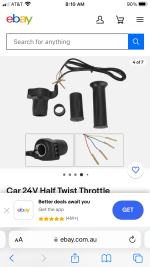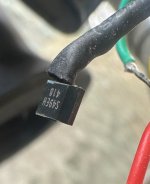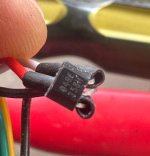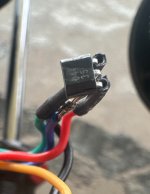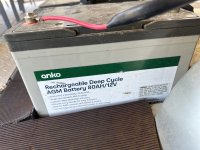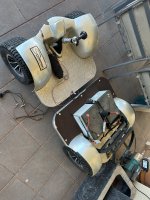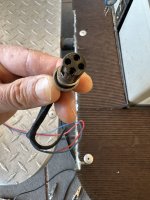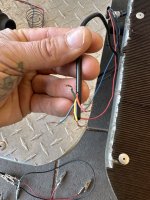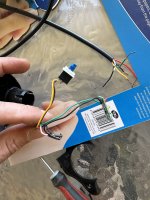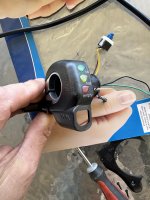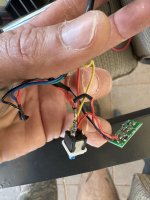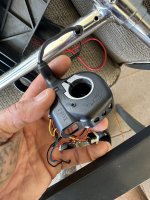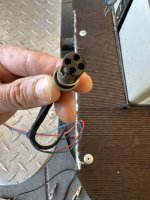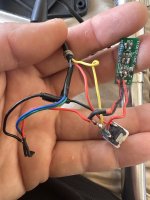syco26
10 mW
I have just purchased a replacement throttle, pt# 29DX. It is branded Wuxing. The unit it is replacing is the same brand and part number. The issue is the new controller is a 6 wire and the old is a 4 wire.
I have tried wiring the new unit but not having any luck at all.
Anyone able to point me in the right direction to get this wired up and working?
The first photo is the old controller next to the new controller.
The second photo is the old controller wiring pulled out for a better view.
The next three are inside the new controller.
The 6th is a crude drawing of the wiring. Note the grey wire is the white.
And the last couple are the resister and diode (think that’s what they are) in the old 4 wire controller.
I have tried wiring the new unit but not having any luck at all.
Anyone able to point me in the right direction to get this wired up and working?
The first photo is the old controller next to the new controller.
The second photo is the old controller wiring pulled out for a better view.
The next three are inside the new controller.
The 6th is a crude drawing of the wiring. Note the grey wire is the white.
And the last couple are the resister and diode (think that’s what they are) in the old 4 wire controller.
Attachments
-
 IMG_2023-12-1-190655.jpeg191.2 KB · Views: 39
IMG_2023-12-1-190655.jpeg191.2 KB · Views: 39 -
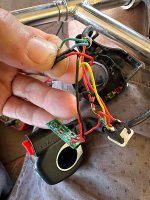 IMG_2023-12-1-190754.jpeg211.3 KB · Views: 38
IMG_2023-12-1-190754.jpeg211.3 KB · Views: 38 -
 IMG_2023-12-1-190859.jpeg172.3 KB · Views: 31
IMG_2023-12-1-190859.jpeg172.3 KB · Views: 31 -
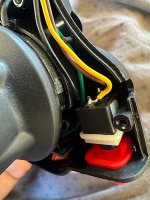 IMG_2023-12-1-190933.jpeg189.6 KB · Views: 24
IMG_2023-12-1-190933.jpeg189.6 KB · Views: 24 -
 IMG_2023-12-1-190953.jpeg172.4 KB · Views: 36
IMG_2023-12-1-190953.jpeg172.4 KB · Views: 36 -
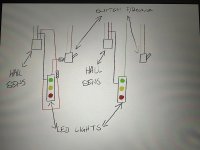 IMG_2023-12-1-191014.jpeg118.6 KB · Views: 37
IMG_2023-12-1-191014.jpeg118.6 KB · Views: 37 -
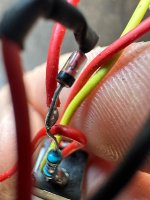 IMG_2023-12-1-191115.jpeg142.1 KB · Views: 36
IMG_2023-12-1-191115.jpeg142.1 KB · Views: 36 -
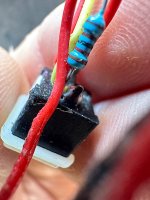 IMG_2023-12-1-191143.jpeg140.4 KB · Views: 31
IMG_2023-12-1-191143.jpeg140.4 KB · Views: 31


